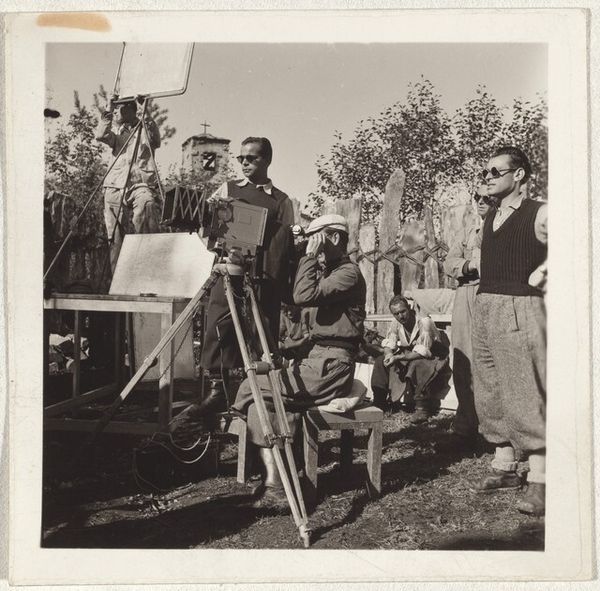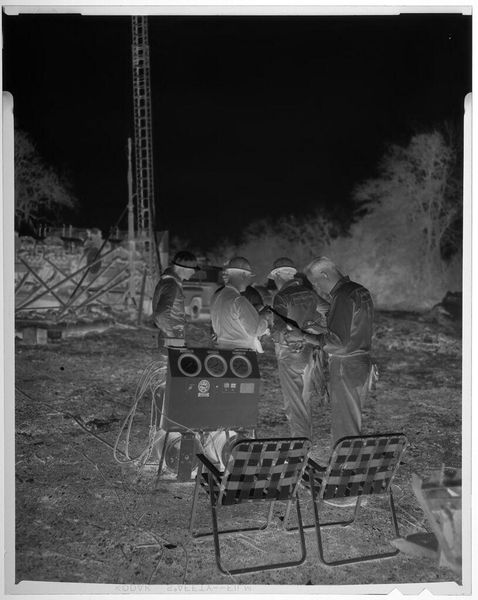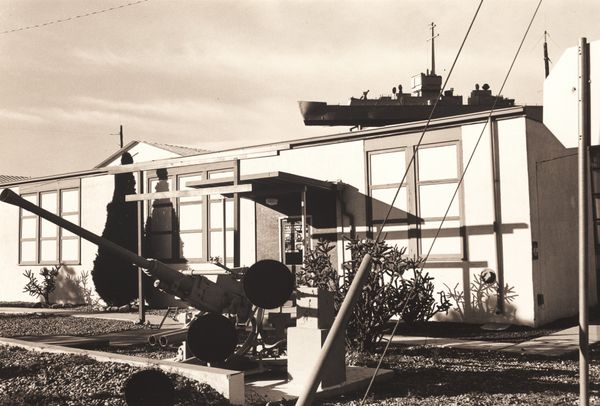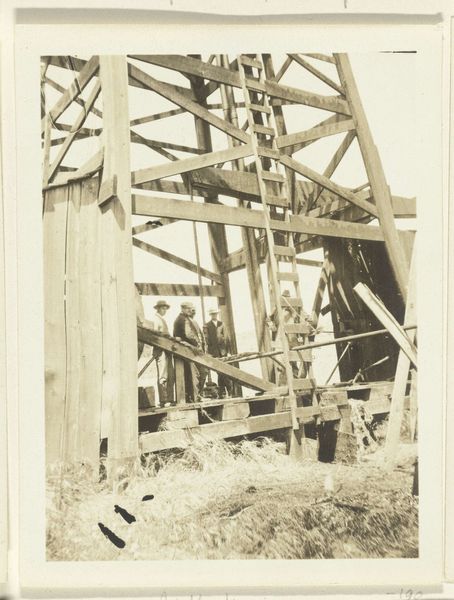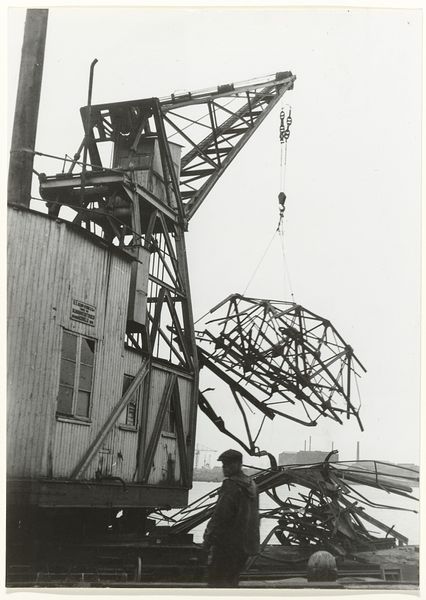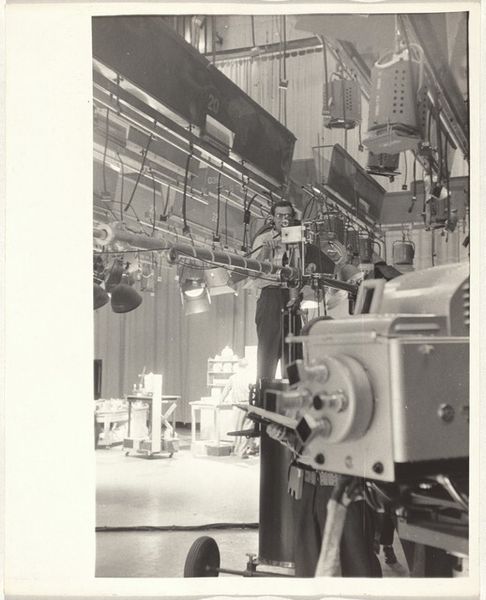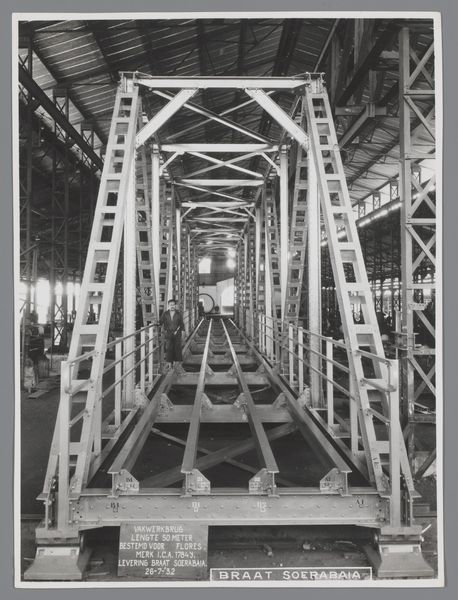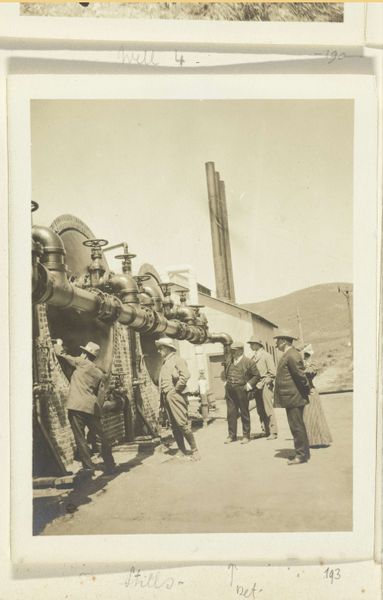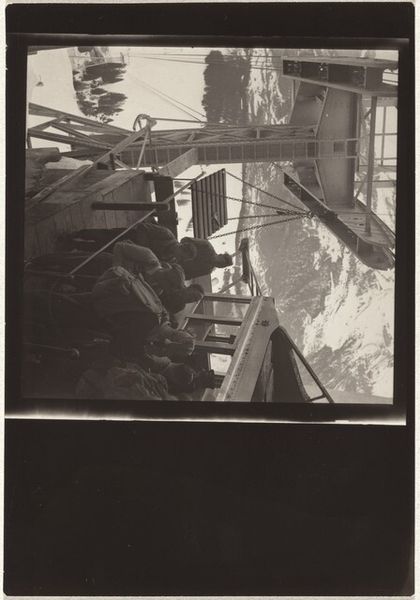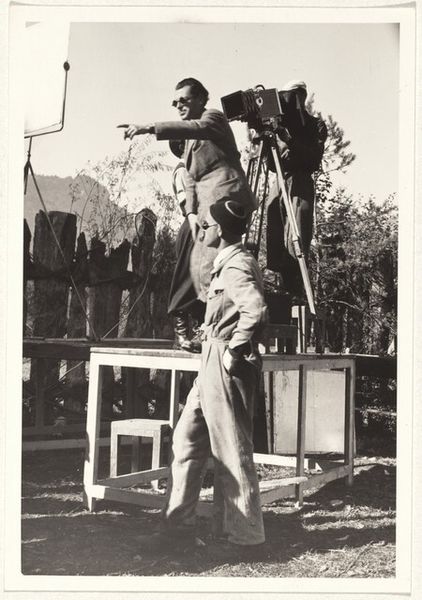
photography, gelatin-silver-print
#
black and white photography
#
landscape
#
photography
#
gelatin-silver-print
#
monochrome photography
#
realism
#
monochrome
Dimensions: image: 14.6 x 13.4 cm (5 3/4 x 5 1/4 in.) sheet: 15.5 x 14.4 cm (6 1/8 x 5 11/16 in.)
Copyright: National Gallery of Art: CC0 1.0
Curator: Robert Frank’s gelatin-silver print, "Behind scenes--Filming 'Landammann Stauffacher'", produced in 1941, presents a captivating glimpse into a film production. The initial impression is one of ordered chaos; ladders, cameras, and numerous figures populate a landscape, giving it a layered effect. Editor: It's quite striking how the equipment, like the ladder and bulky camera, seem to dominate the actors on set. You can almost feel the weight of the technology, and the labor required to operate it. Curator: Absolutely. Looking at this image through a lens of identity and context, we might consider the cultural impact of such films, particularly during the wartime era in Switzerland. "Landammann Stauffacher" touches on Swiss history and myth. The 'behind the scenes' aspect complicates the final heroic narrative often depicted. Editor: Indeed. And notice how Frank captures not the final polished image of the film, but the actual process, the means of its production. The bulky camera itself, along with the lighting reflectors, become key elements within the composition; reminding us of all the tools and people it takes to tell this myth. Curator: By documenting the making of the film, Frank also offers commentary on constructing national identity and propaganda at the time. We see the artifice. It raises questions about whose stories are being told and by whom, especially in a period of such political tension. The social dynamics between the filmmakers, crew and film content must be parsed out to see its role. Editor: The monochrome adds another layer, flattening the hierarchy between the players. Everyone is united in getting this task done, regardless of race, gender, or other characteristics; as such these nuances of identity disappear and come into the communal task. And the gelatin-silver printing enhances the textured materiality; reminding the viewer this isn’t just a captured scene, it’s also a crafted object, a representation in itself. Curator: I agree, its textural quality adds to this photographic account and highlights a different perspective on art during a complicated political period, and I wonder how modern cinematic practices can learn from these behind-the-scenes portrayals. Editor: I hadn’t considered the parallels to modern cinematic practices like that before; viewing this I really can appreciate the image's depth from production and identity-construction viewpoints.
Comments
No comments
Be the first to comment and join the conversation on the ultimate creative platform.
